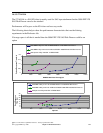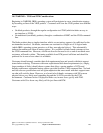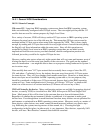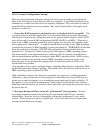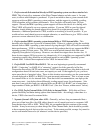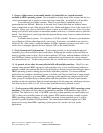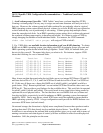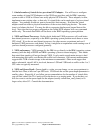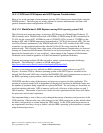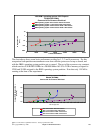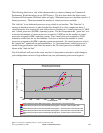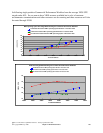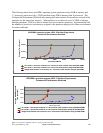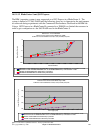
14.5.1.3 Specific VIOS Configuration Recommendations -- Traditional (non-blade)
Machines
1. Avoid volume groups if possible. VIOS "hdisks" must have a volume identifier (PVID).
Creating a volume group is an easy way to assign one and some literature will lead you to do it
that way. However, the volume group itself adds overhead for no particular value in a typical
IBM i operating system context where physical volumes (or, at least, RAID sets) are exported as
a whole without any sort of partitioning or sub-setting. Volume groups help multiple clients
share the same physical disks. In an IBM i operating system setting, this is seldom relevant and
the overhead volume groups employ is therefore not needed. It is better to assign a PVID by
simply changing the attribute of each individual hdisk. For instance, the VIOS command:
chdev -dev hdisk03 -attr pv=yes will assign a PVID to hdisk3.
2. For VIOS disks, use available location information to aid your RAID planning. To obtain
RAID sets in IBM i operating system, you simply point DST at particular groups you want and
IBM i operating system decides which disks go together. Under VIOS, for internal disks, you
have to do this yourself. The names help show you what to do. For instance, suppose VIOS
shows the following for a set of internal disks:
Name Location State Description Size
pdisk0 07-08-00-2,0 Active Array Member 35.1GB
pdisk1 07-08-00-3,0 Active Array Member 35.1GB
pdisk2 07-08-00-4,0 Active Array Member 35.1GB
pdisk3 07-08-00-5,0 Active Array Member 35.1GB
pdisk4 07-08-00-6,0 Active Array Member 35.1GB
pdisk5 07-08-01-0,0 Active Array Member 35.1GB
pdisk6 07-08-01-1,0 Active Array Member 35.1GB
Here, it turns out that these particular physical disks are on two internal SCSI buses (00 and 01)
and have device IDs of 2, 3, 4, 5, and 6 on SCSI bus 00 and device IDs of 0 and 1 on SCSI bus
01. If this was all there was, a three disk RAID set of pdisk0, pdisk1, and pdisk5 would be a
good choice. Why? Because pdisk0 and 1 are on internal SCSI bus 00 and the other one is one
SCSI bus 01. That provides a good balance for the available drives. This could also be repeated
for pdisk2, pdisk3, pdisk4, and pdisk6. This would result in two virtual drives being created to
represent the seven physical drives. The fact that these are two RAID5 disk sets (of three and
four physical disks, respectively) would be unknown to IBM i operating system, but managed
instead by VIOS. One or may be two virtual SCSI buses would be required to present them to
IBM i operating system by VIOS. A large configuration could provide for RAID5 balance over
even more SCSI buses (real and virtual).
On external storage, the discussion is slightly more complicated, because these products tend to
package data into LUNs that already involve multiple physical drives. Your RAID set work
would have to use whatever the external disk storage product gives you to work with in terms of
naming conventions and what degree of control you have available to reflect favorable physical
boundaries. Still, the principles are the same.
IBM i 6.1 Performance Capabilities Reference - January/April/October 2008
© Copyright IBM Corp. 2008 Chapter 14 DASD Performance 220



